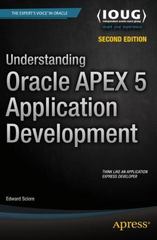Question
1) ID:180706032 a-) If your ID is an odd number find the link (pointer) size, otherwise (if your ID is even) find the key (index)
1)
ID:180706032
a-) If your ID is an odd number find the link (pointer) size, otherwise (if your ID is even) find the key (index) size. b-) Assume that you have (Your student IDs last [rightmost] two digits * 10 * million) records. c-) If your ID is even, assume that you have 10-byte pointers. If your ID is odd, assume that the key size of your record is the (sum of first two digits and last two digits of your ID) bytes. d-) Assume that the height of tis B+ is ((the last digit of your id MOD 4) + 1) e-) Assume that the record size of your question is (last [rightmost] two digits * 512 ) bytes. f-) Assume that the block size of your question is the (first [leftmost] two digits) MB
ID:180706032
a-) The given ID is an odd number, this means you must find and appropriate link (pointer) size for this B+ Tree. b-) The given ID ends with 13, this means you have (13 * 10 * million =) 130 million records. c-) The given ID is odd, you can assume that the key size of your record is (10 + 13 = 23) 23 bytes. d-) The given ID ends with 3, the height of this B+ tree is (3 MOD 4) + 1 = 4. e-) Record size is 13 * 512 = 6656 bytes. f-) Block size is 10 MB.
2)
Assume that you CAN NOT use recursion! Develop an algorithm to print out a Binary Search Tree (BST) in LVR fashion (in ascending order, in-order or ordered way). Write down pseudo-code or code similar to C to explain your solution.
Step by Step Solution
There are 3 Steps involved in it
Step: 1

Get Instant Access to Expert-Tailored Solutions
See step-by-step solutions with expert insights and AI powered tools for academic success
Step: 2

Step: 3

Ace Your Homework with AI
Get the answers you need in no time with our AI-driven, step-by-step assistance
Get Started


